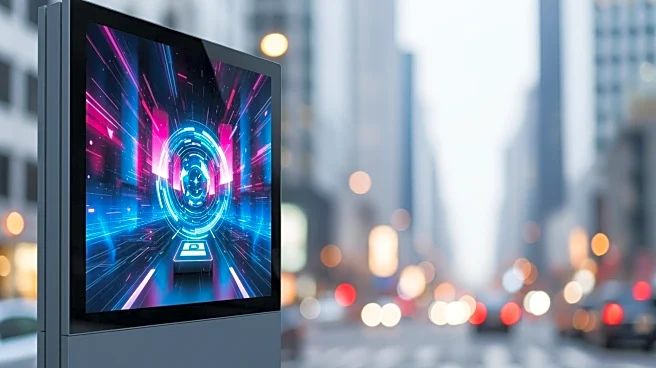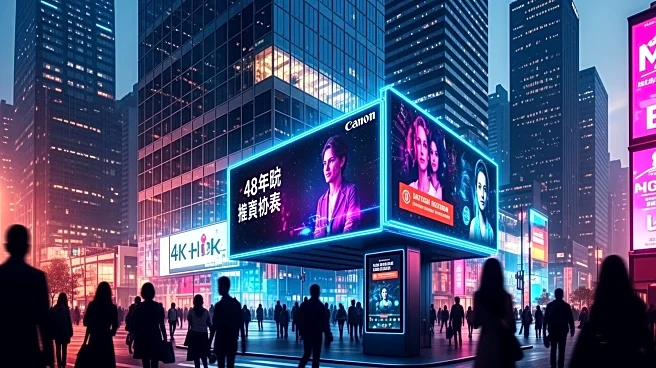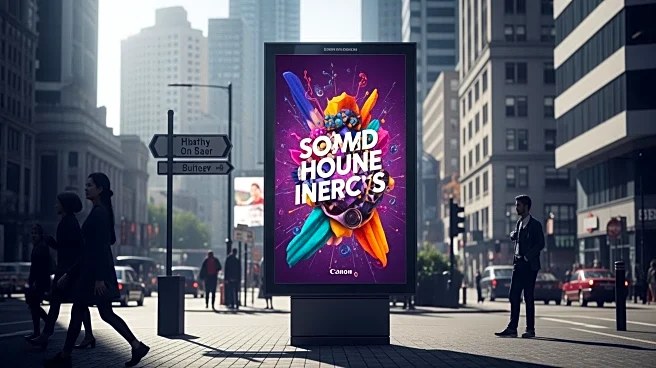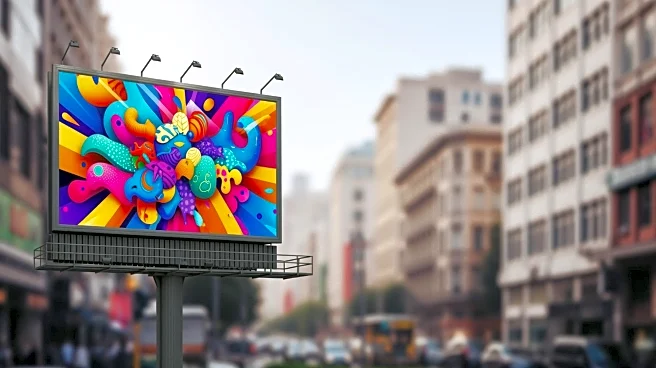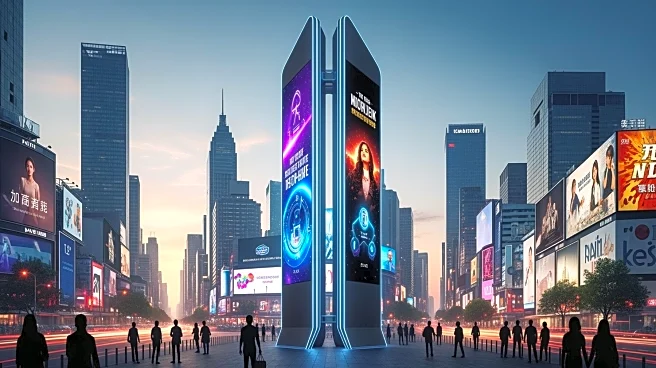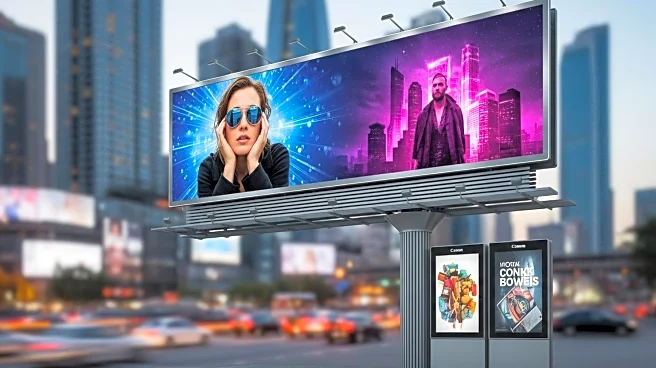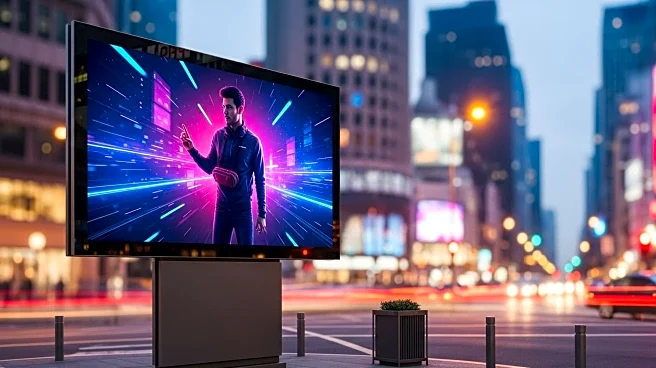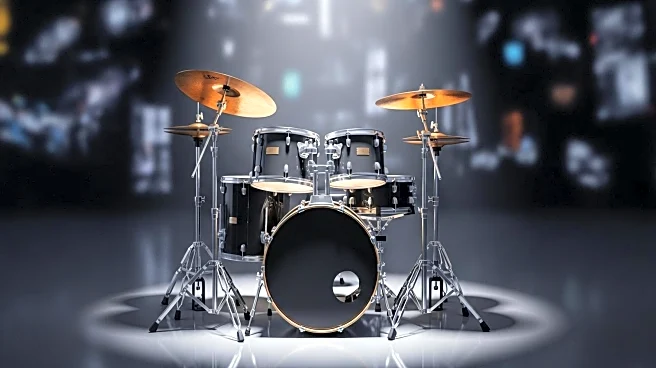What's Happening?
Out-of-home (OOH) advertising is evolving with creative strategies that aim to capture attention through relevance and surprise. Georgia Hamp, a creative strategist at Grand Visual, emphasizes the importance
of engaging audiences in the real world, contrasting the constant barrage of digital ads on screens. OOH campaigns are increasingly using technology to tailor messages to specific moments, such as digital screens offering timely deals or ads that change with the weather. Creative elements like 3D billboards, interactive bus shelters, and dynamic murals are designed to create memorable experiences that resonate with viewers. These strategies are not just about visibility but about creating moments that people talk about and share, thereby extending the reach of the campaign beyond its physical location.
Why It's Important?
The shift towards more engaging and interactive OOH advertising reflects a broader trend in marketing where brands seek to connect with consumers on a deeper level. By creating memorable experiences, brands can foster stronger emotional connections and increase brand loyalty. This approach also complements digital marketing efforts, bridging the gap between online and offline engagement. As consumers become more adept at tuning out traditional ads, the need for innovative and immersive advertising becomes crucial. Brands that successfully implement these strategies can differentiate themselves in a crowded marketplace, potentially leading to increased consumer engagement and brand recognition.
What's Next?
The future of OOH advertising is likely to see further integration of technology, with advancements such as augmented reality and real-time data analytics playing a significant role. Brands may continue to explore creative ways to engage audiences, leveraging technology to create personalized and contextually relevant experiences. As the industry evolves, there may be increased collaboration between tech companies and advertisers to develop new tools and platforms that enhance the effectiveness of OOH campaigns. Stakeholders in the advertising industry will need to adapt to these changes, focusing on creativity and innovation to maintain relevance in an increasingly digital world.
Beyond the Headlines
The evolution of OOH advertising raises questions about privacy and data usage, as campaigns become more personalized and reliant on real-time data. Ethical considerations regarding consumer consent and data protection will likely become more prominent as technology continues to advance. Additionally, the cultural impact of these immersive advertising experiences may influence public perceptions of brands and advertising as a whole, potentially leading to shifts in consumer behavior and expectations.


